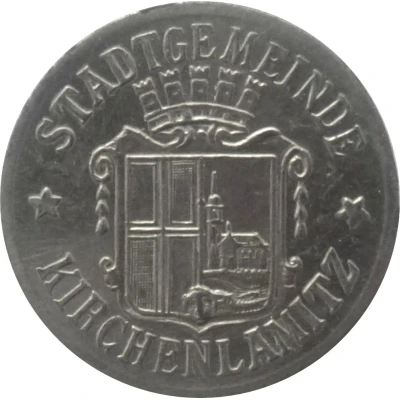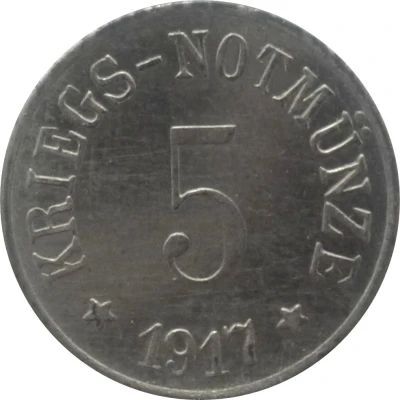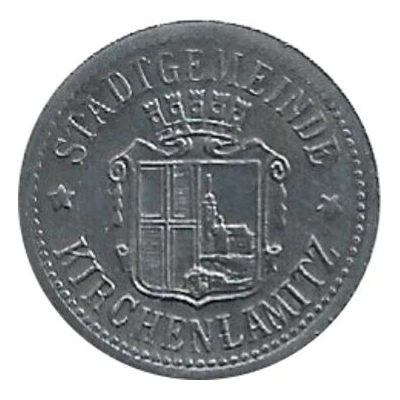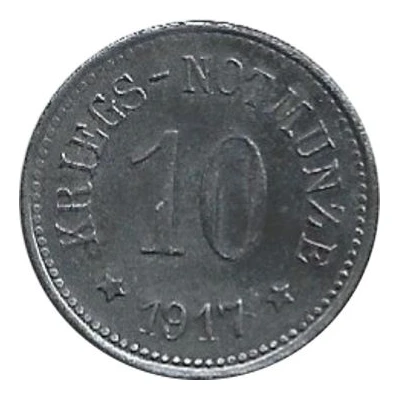
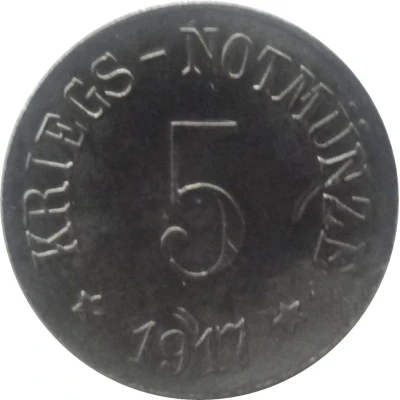

© Willem63 (CC BY-NC-SA)
5 Pfennigs - Kirchenlamitz
1917 year| Iron | 1.8 g | 18.0 mm |
| Issuer | City of Kirchenlamitz (Federal state of Bavaria) |
|---|---|
| Emperor | William II (Wilhelm II) (1888-1918) |
| Type | Standard circulation coin |
| Year | 1917 |
| Value | 5 Pfennigs (5 Pfennige) (0.05) |
| Currency | Mark (1914-1924) |
| Composition | Iron |
| Weight | 1.8 g |
| Diameter | 18.0 mm |
| Thickness | 1.0 mm |
| Shape | Round |
| Technique | Milled |
| Orientation | Medal alignment ↑↑ |
| Demonetized | Yes |
| Updated | 2024-10-04 |
| Numista | N#296662 |
|---|---|
| Rarity index | 95% |
Reverse
Pearl rim, legend surrounding denomination.
Script: Latin
Lettering:
KRIEGS-NOTMÜNZE
5
★ 1917 ★
Edge
Plain
Interesting fact
One interesting fact about the 5 Pfennigs - Kirchenlamitz 1917 coin is that it was issued during a time of economic turmoil in Germany, known as the "Inflationary Period" (1914-1923), when the value of the German mark plummeted, and the prices of goods and services skyrocketed. To combat this issue, the government issued coins with lower denominations, such as the 5 Pfennigs, to help people purchase everyday items. Despite its low value, the coin is a unique piece of history that reflects the economic challenges faced by Germany during that time.
